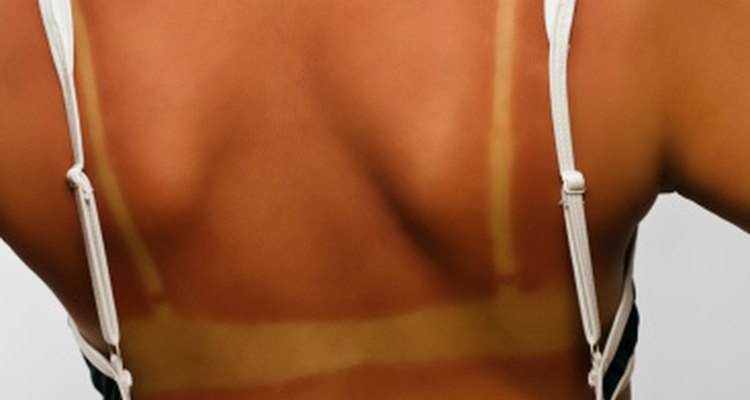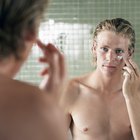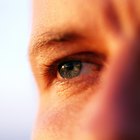
Estradiol is a synthetic form of the female hormone, estrogen. According to Drugs.com, it is used in topical form as hormone replacement to alleviate the symptoms of menopause, such as hot flashes, vaginal dryness and more. The use of synthetic estrogen creams has gained attention as an approach to the loss of skin elasticity that comes with menopause. Estradiol is also thought to reduce the depth of skin wrinkles and boost the production of collagen. However, it is not considered to be a medical treatment, and further studies are needed in this area.
Function
As your skin ages, it begins to lose resiliency and become less elastic, resulting in loose, sagging skin. According to a study published in the "American Journal of Clinical Dermatology," the depletion of estrogen in a woman's skin with age may also play a role in elasticity. The researchers, led by M.G. Shah of the University of California, San Francisco, noted that topically-applied estrogens may prevent the loss of collagen in post-menopausal skin, thicken skin, and prevent the development of wrinkles. Further studies are needed to confirm these effects.
Benefits
According to a study published in the "Archives of Dermatology," estradiol cream applied to the skin may boost the production of collagen in the skin. The study, which was conducted at the University of Michigan Medical School, Ann Arbor, and led by Laure Ritte, assessed 40 postmenopausal women and 30 men with an average age of 75. The study subjects had all acquired signs of photoaging, or sun-related aging. Over the course of two weeks, the study participants applied estradiol both to areas protected from the sun by clothing and sun-exposed areas, such as the arms and face. The researchers found that the protected skin demonstrated increased collagen levels, whereas the face and forearm skin did not.
Combinations
A 2003 study reported that the use of estradiol cream may demonstrate further benefit when used in combination with glycolic acid. This study, which was published in the journal "CUTIS," assessed the use of glycolic acid cream, estradiol cream, a combination of the two, and a control cream in 65 study subjects. The estradiol cream resulted in a 23 percent increase in skin thickness, and the glycolic acid cream showed a 27 percent increase in skin thickness, according to the study. The researchers added that the two creams, when used together, demonstrated a cumulative benefit.
Caution
Drugs.com notes that the use of estradiol cream may cause dark or discolored pigmentation spots on your skin, also known as melasma. These spots may be worsened by exposure to the sun, so be sure to wear sunscreen to prevent this effect. Other possible effects of estradiol cream may include dizziness, allergic reaction, swellling, hives, a rash resembling sunburn, and difficulty wearing contact lenses. Talk to your doctor about any concerning side effects of estradiol cream.
Considerations
Drugs.com notes that you should talk to your doctor prior to using estradiol cream if you are taking blood thinners, such as warfarin, or corticosteroid,s like prednisone, as estradiol cream may increase the side effects of these medications. In addition, you should avoid using estradiol cream if you have any estrogen-related cancers.
Related Articles

The Difference Between Retin A & Renova

Estrogen in Skin Creams

Tazorac Cream & What it Does for Acne

What Is Tretinoin Cream Used For?

5 Things You Need to Know About ...

Removing Acne Scars With Tretinoin Cream

Possible Side Effects of Obagi

Estrace Cream for Wrinkles

How to Use Vitamin A on Your Face

Aloe Ferox Benefits

Estrogen Cream for Hair Removal

Bromelain & Bruising

List of Retinoids

Skin Care Products That Contain ...

Jojoba Oil Benefits

What Are the Benefits of Ashwagandha in ...

Chasteberry for Acne

How to Make Homemade Moisturizing Cream ...

Does Retin-A Micro Gel Get Rid of ...

Arnica for Acne
References
Writer Bio
Jennifer Byrne is a freelance writer and editor specializing in topics related to health care, fitness, science and more. She attended Rutgers University. Her writing has been published by KidsHealth.org, DietBlogTalk.com, Primary Care Optometry News, and EyeWorld Magazine. She was awarded the Gold Award from the American Society of Healthcare Publication Editors (ASHPE), 2007, and the Apex Award for Publication Excellence.
Photo Credits
Ralf Nau/Lifesize/Getty Images